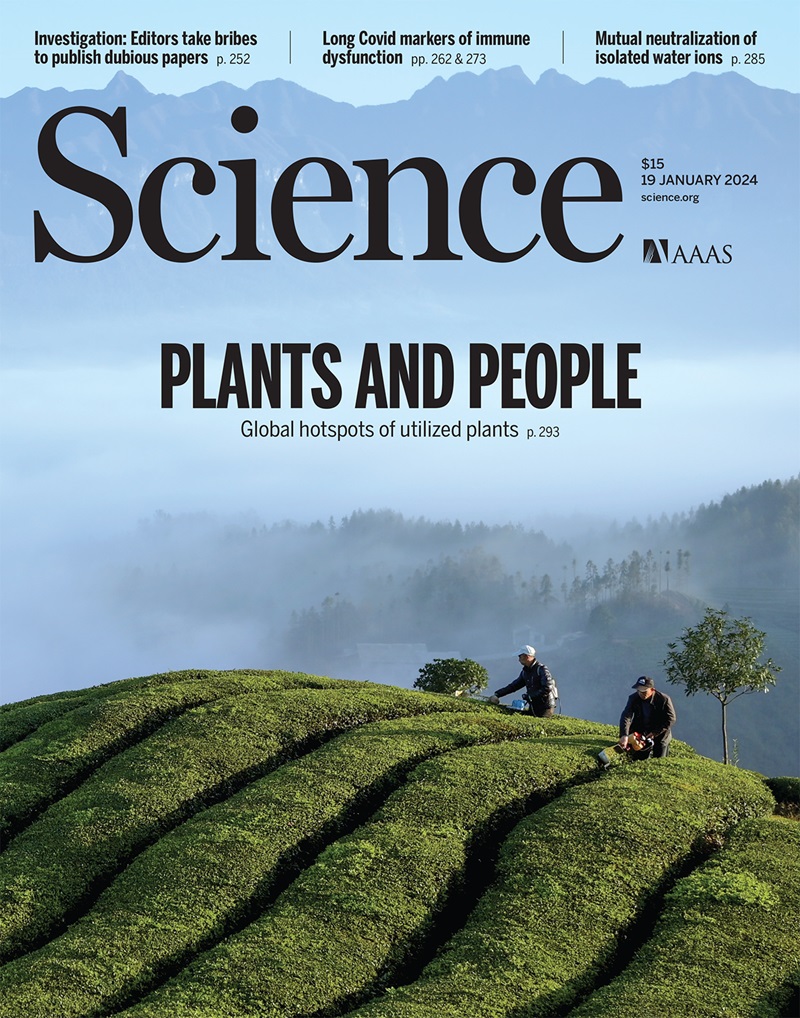Imaging nuclear architecture in single cells
IF 44.7
1区 综合性期刊
Q1 MULTIDISCIPLINARY SCIENCES
引用次数: 0
Abstract
The smallest functional unit in our bodies, the cell, is spatially organized with various molecules, including DNA, RNA, and proteins. Studying the subcellular organization of molecules in individual cells is fundamental for understanding diverse cell types and states, from neurons to cancer cells. The cell’s nucleus—a highly organized membrane-bound organelle that contains genomic DNA in eukaryotes—is closely linked with complex gene regulation in higher organisms. Revealing its three-dimensional (3D) organization is therefore of considerable interest to a wide range of fields, including developmental biology, neuroscience, and human disease. Great advances have been made, from the groundbreaking observations of the nuclear structures in mammalian neurons under light microscopy by Santiago Ramón y Cajal in 1910 to modern genomics and imaging technologies (1, 2). However, technical limitations in the direct measurement of spatial organization of molecules in the nucleus still limit what insights can be gained into 3D nuclear architecture and gene regulation.
单细胞核结构成像。
多路成像揭示了单个核的精确三维地图。
本文章由计算机程序翻译,如有差异,请以英文原文为准。
求助全文
约1分钟内获得全文
求助全文
来源期刊

Science
综合性期刊-综合性期刊
CiteScore
61.10
自引率
0.90%
发文量
0
审稿时长
2.1 months
期刊介绍:
Science is a leading outlet for scientific news, commentary, and cutting-edge research. Through its print and online incarnations, Science reaches an estimated worldwide readership of more than one million. Science’s authorship is global too, and its articles consistently rank among the world's most cited research.
Science serves as a forum for discussion of important issues related to the advancement of science by publishing material on which a consensus has been reached as well as including the presentation of minority or conflicting points of view. Accordingly, all articles published in Science—including editorials, news and comment, and book reviews—are signed and reflect the individual views of the authors and not official points of view adopted by AAAS or the institutions with which the authors are affiliated.
Science seeks to publish those papers that are most influential in their fields or across fields and that will significantly advance scientific understanding. Selected papers should present novel and broadly important data, syntheses, or concepts. They should merit recognition by the wider scientific community and general public provided by publication in Science, beyond that provided by specialty journals. Science welcomes submissions from all fields of science and from any source. The editors are committed to the prompt evaluation and publication of submitted papers while upholding high standards that support reproducibility of published research. Science is published weekly; selected papers are published online ahead of print.
 求助内容:
求助内容: 应助结果提醒方式:
应助结果提醒方式:


